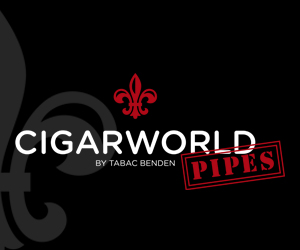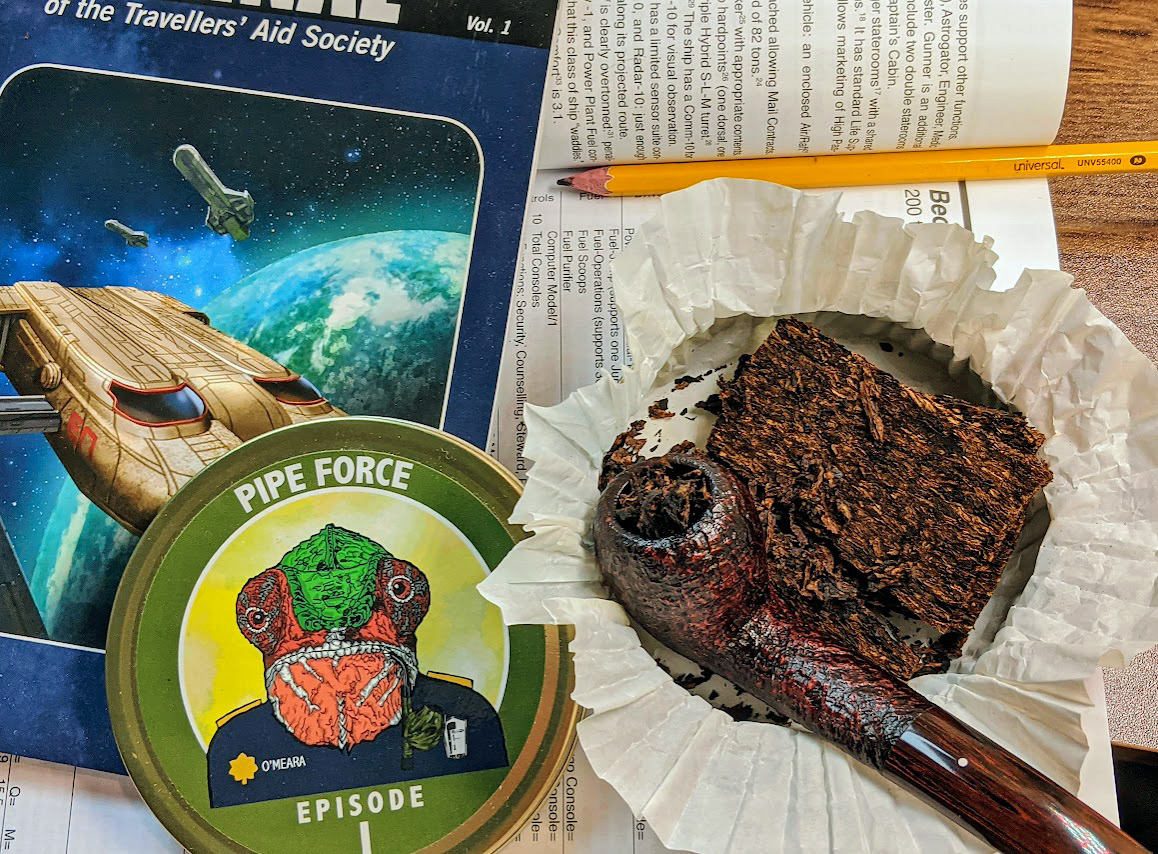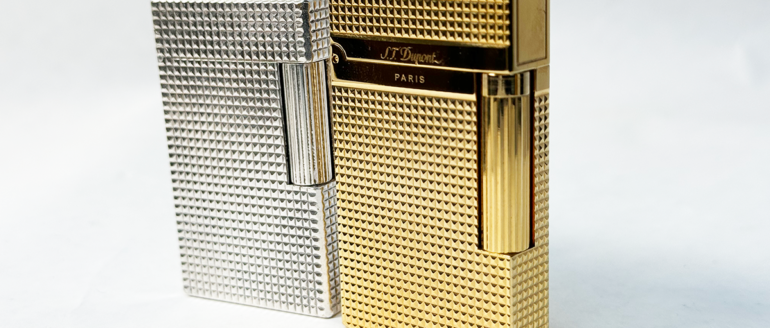
S.T. Dupont Company makes some of the finest and most expensive lighters in the tobacco smoking world. They are indeed a luxury item for pipe smokers who wish to light their pipes with style and panache and also like to light up piles of cash to keep warm in the winter. Founded in 1872 by Simon Tissot-Dupont (hence the S.T.) as a carriage company and then later leather briefcases for diplomats and businessmen, it continued to expand into highly sought-after luxury goods. Does it sound somewhat similar to Dunhill’s early beginnings?
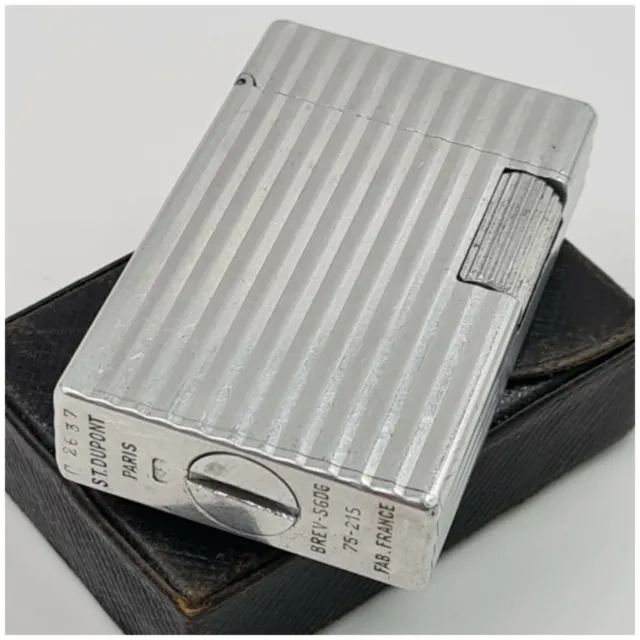
The company’s first mass-produced lighter was in 1941, and it was made of aluminum as brass and other finer metals were needed for war production. Later, post-war, the company switched to 18k gold, silver, and other finer metals. Today, S.T. Dupont is owned by Hong Kong company Dickson Concepts, which sells fashion products, watches, pens, and of course, lighters. What makes an S.T. Dupont product a luxury product is not just its trademark sound or signature logo; it is the quality and craftsmanship that is long-lasting. Thus, examples like this are passed down from generation to generation as they stand the test of time.
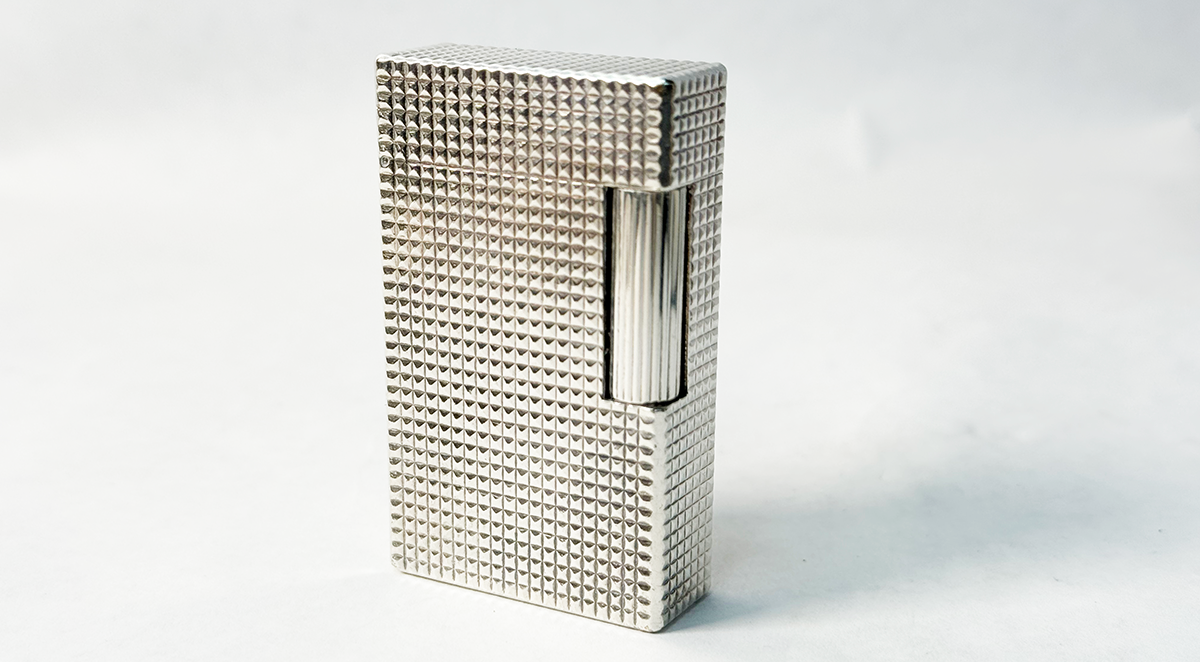
S.T. Dupont’s current offering of lighters is rather large, featuring a price range from $140 to over $10,000 for rare and extremely limited examples. The most common soft flame lighters are the Ligne 1 and Ligne 2. In the late 1950s, Dupont decided to move away from the petroleum fluid-wick style found in the common zippo lighters to pressurized butane lighters, and the Ligne 1 Briquet Standard(BS) – or Standard Lighter became the first model to offer that.

Our focus today will be on the above versions of the lighter, for which I have acquired Ligne 1 and Ligne 2 style examples, but with an exception to talk through on the Ligne 2. The Ligne 1 pictured above I acquired used from fellow Master of Pipes Dave Shain. These used lighters can start as low as $100 for used working examples but typically are priced a bit more depending on the age. This one was made in the mid-1990s.
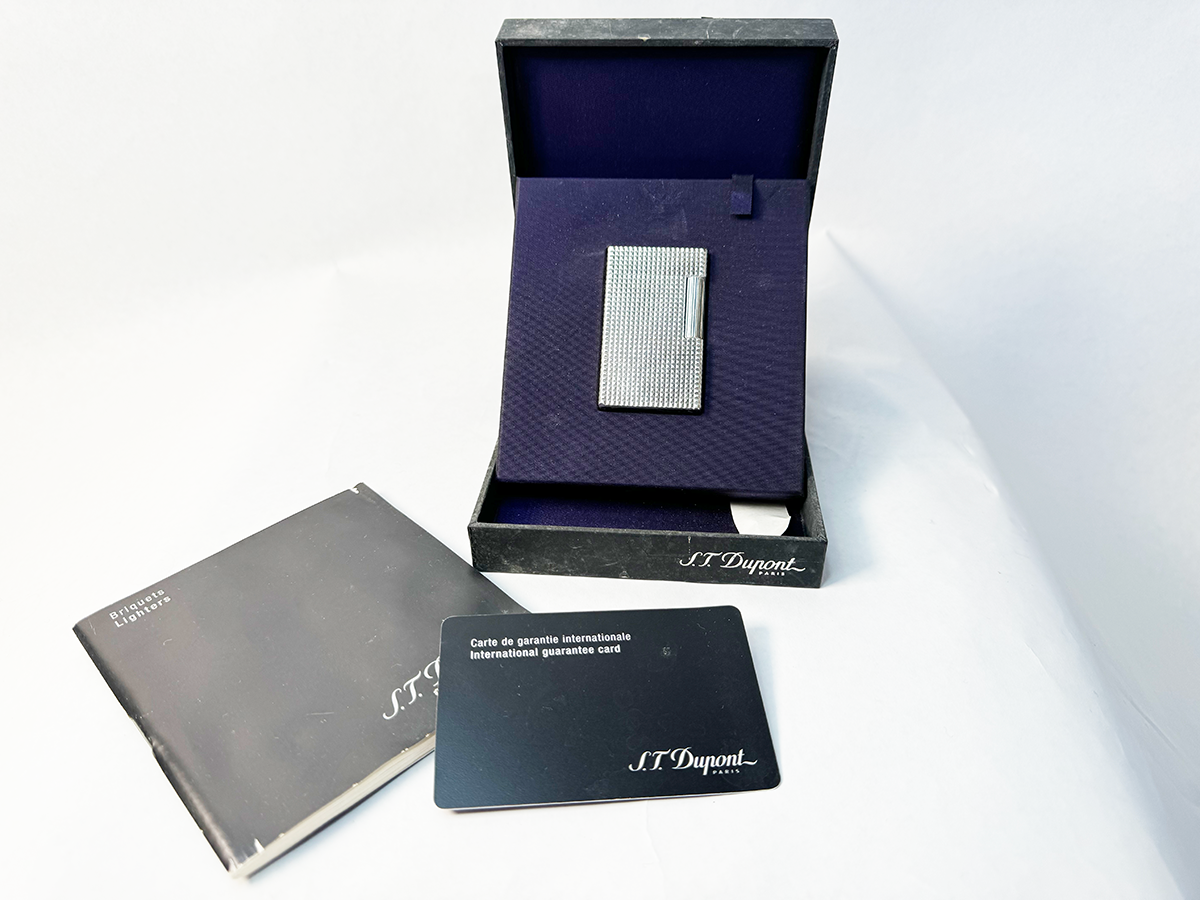
Typically, these come with the box, papers, and lighter, and I recommend trying to get as much of the original as possible, which helps the authenticity. Additionally, purchasing from an authorized dealer if they do not have the original box and papers helps when trying to avoid copies.
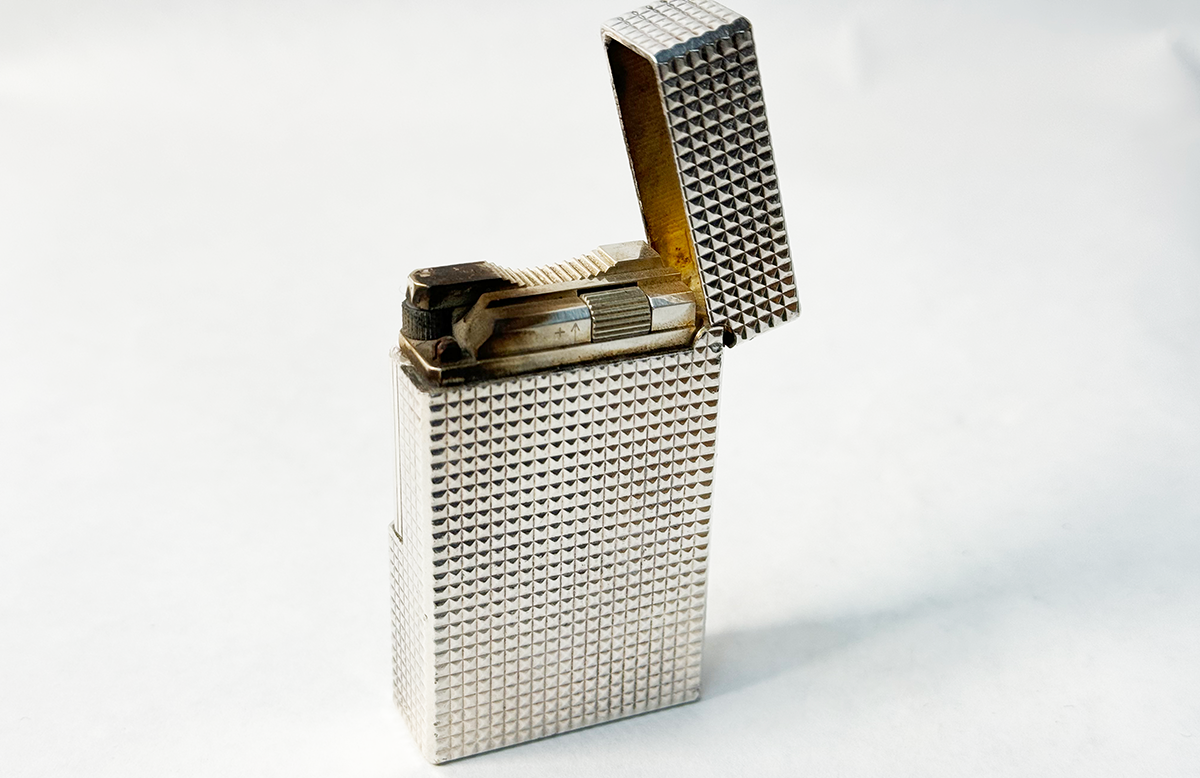
The butane flow is adjusted on the top rear thumb wheel indicated with the arrow pointing up and the + sign. To change the flint on the top horizontal and indented thumb slide, you slide backward toward the lid’s hinge and drop in your replacement flint.
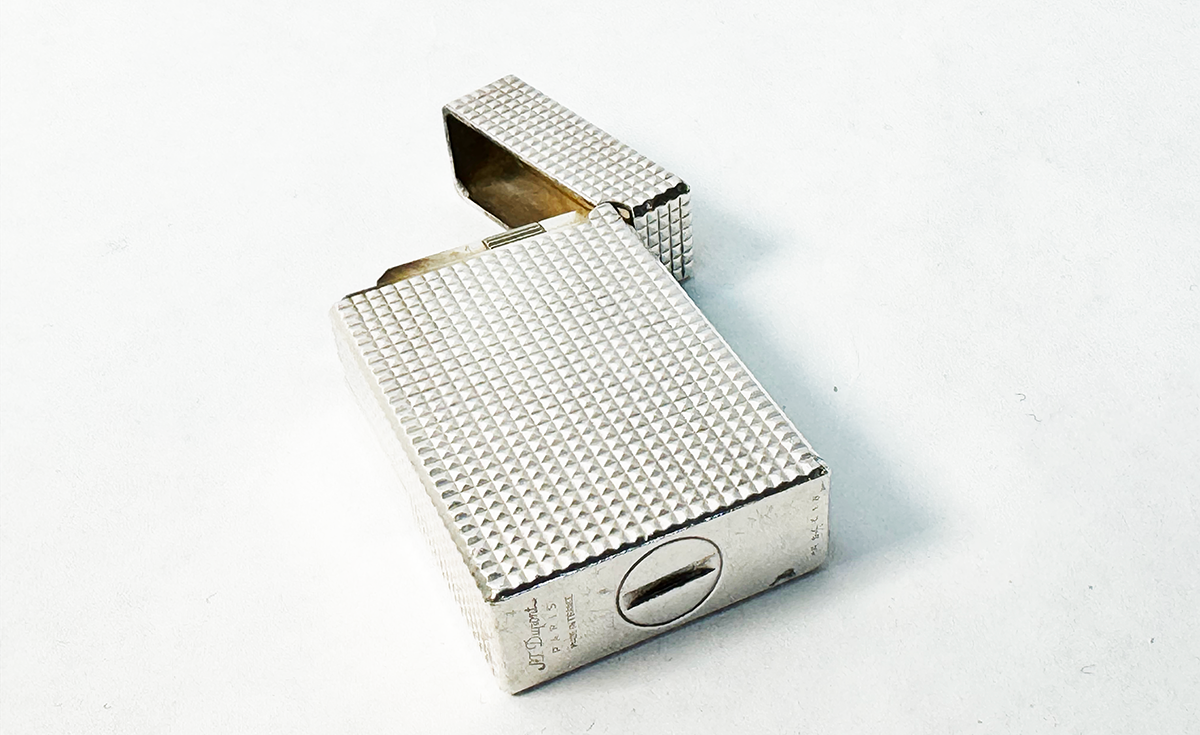
The bottom has the butane fill as well as the logo and serial number, which we’ll talk more about later.
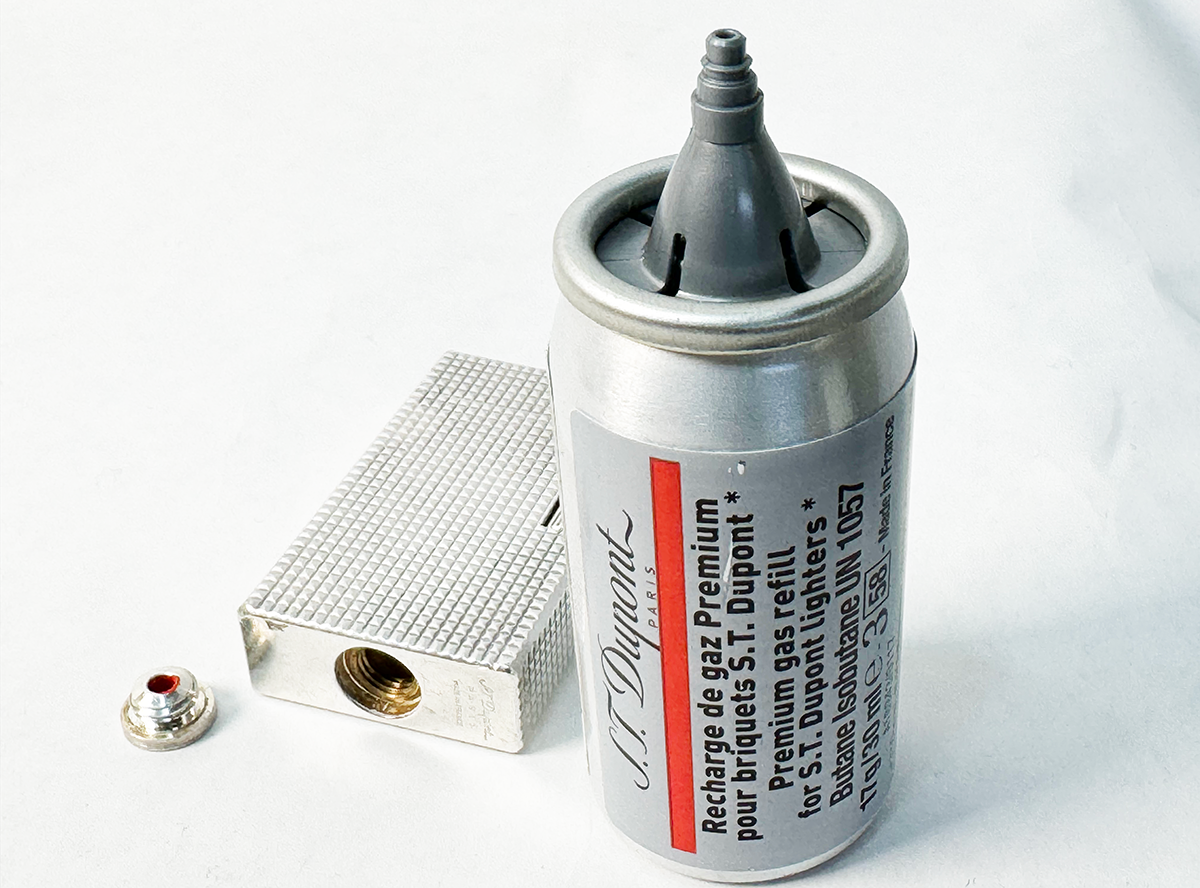
To refill these lighters, you use the large thumb screw that, if not too tight, you can open with your thumb fingernail. Otherwise, I find the spoon of a pipe tool works just fine as well. Take note of the color inside the thumb screw cover, which is red. This indicates the lighter needs “red” S.T. Dupont butane, and the red indicates the type of connection needed.
To fill the lighter, DO NOT do what I’ve shown here. You want to turn the lighter and bottle upside down vertically and press down on the bottle for 5 seconds.
You may be looking for your non-Dupont adapters that sometimes come with generic butane bottles, and you most likely won’t find the right adapter. Dupont has changed the color of the butane refill indicator and adapters over the years, so it’s important to follow the color and buy the refill that matches.
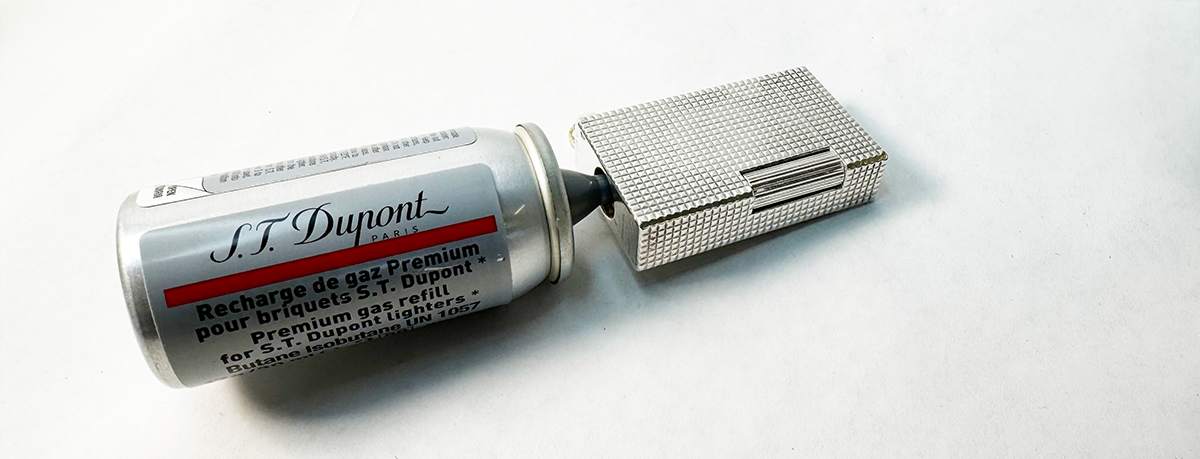
The current listing is as such:
● Black refills: Liberté, Ligne 2 Torch, Maxijet, Minijet, Ultrajet, X-Tend.
● Red refills: Défi Extrême, cylindrical table lighters and Jeroboam.
● Blue refills: D Light, Ligne 8, Soubreny, Urban, Ligne D and Mon Dupont by Karl Lagerfeld.
● Yellow refills: Ligne 1, Ligne 2 and long table lighters.
● Green refills: Gatsby and small Ligne 2 models.
That said, you’ll notice I’m using red to refill my Ligne 1, whereas the newer models would choose yellow. I point this out because the size of the lighter nozzle on the lighter can vary, and the nozzle on the refill bottle also will vary in size.
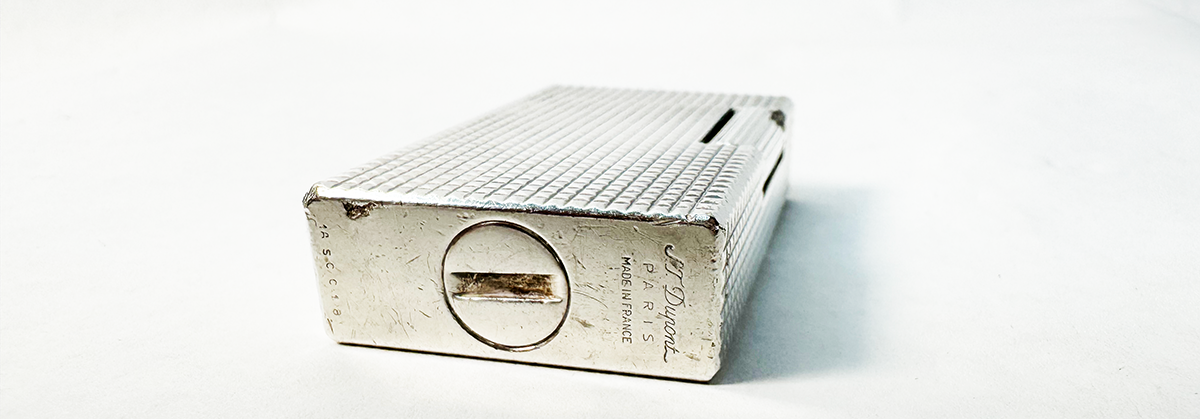
The bottom serial numbers are hand-stamped and will be inconsistent in size and spacing. This is one of the main indicators that it is, indeed, an authentic lighter.
That Perfect Ping
In recent years one of the things that many look for is the now classic “ping” when opening a lid of an S.T. Dupont lighter. Apparently, this errant ping sound was discovered by accident, but now they are manufactured specifically to have this and have a specific tone to listen for. Today, they even have the “Perfect Ping” version of the Ligne 2 lighter, which starts at around $1200.
Digging in Deeper
To shed a bit more light on these lighters, I enlisted the help of David Cherner of Art Brown International, one of the few and finest authorized warranty, service, and repair shops in the US. They also refurbish and sell used as well as brand new.
As I understand it, a manufacturing defect or issue occurred when making the Ligne lighters that caused the ping – but was that the newer Ligne 2 lighters, or did it happen much further in the past? I know you’ve stated that the Ligne 1 did not have a ping. I’m trying to understand the timeline of S.T. Dupont better.
David: The ping originally occurred in the Ligne 1 lighters and happened when the lighter was closed – NOT when it was opened. This was an accident that occurred due to the construction of the lid. When they started to produce Ligne 2 lighters in the ’60s, they turned the focus on the opening sound of the lighter. Each and every lighter has a unique sound due to materials and construction, with lacquered models muffling the sound. Recently, S.T. Dupont released their collection of “Perfect Ping” lighters that ring louder than ever. These lighters have lids plated with either palladium, platinum, or gold without lacquer to prevent muffling.
How many internal parts make up Ligne 1 and 2?
David: Each ligne 1 and 2 lighter contains roughly 300 internal parts.
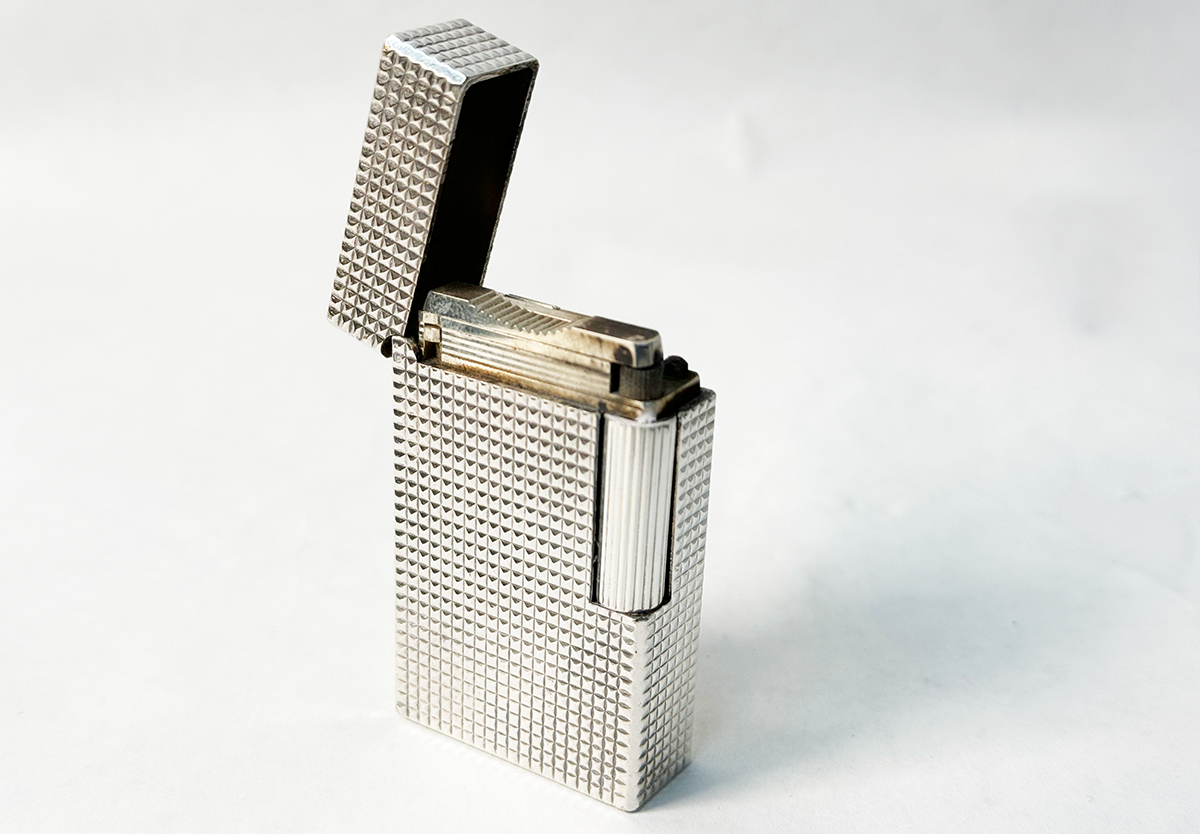
To shed some more light on refilling the lighters, you need a special adapter for older lighters, but newer ones not so much?
David: At the moment, S.T. Dupont has 5 different filing systems and 6 different cans (colors) of gas – this goes for new and old lighters alike. These cans are made with premium filtered butane as well as the correct refilling head for each lighter. As per the manufacturer, you are required to use the correct colored gas refill to maintain your warranty. It is NOT recommended to use any third-party adapters as there is no guarantee that it will not harm the lighter.
Are there any specific maintenance tips that owners should know about to extend the life of their lighters between servicing?
David: The best case is to keep your lighters in a cool and dry place. Excess humidity and heat can each cause their own host of problems. It is good practice to clean off your lighters using a silver polishing cloth with no solvents. When it comes to the torch lighters, it is imperative that you avoid any ash [also carbon build up] getting into the ignition chamber. Over time this will clog and damage the lighter, creating issues with ignition. It is a good idea to use compressed air to clean out the ignition chamber every so often. This can be done with ligne 1/ligne 2 lighters as well under the lid.
What’s the average cost of repair or service?
David: The average service cost varies depending on the model and required repair. The prices range from $75 up to $200+.
Which lighters are the most common that you service?
David: We service all of their models roughly the same amount, with the ligne 1 and ligne 2 lighters taking the lead simply due to age. These lighters have been around since the 50’s and 60’s meaning that there is an abundance of models circulating the world – much more than any other. Because of this, we often see vintage ligne 1 lighters as well as older ligne 2
Have you been sent fakes before to repair and how did their owners take it?
David: We are occasionally sent an inauthentic lighter. We do not service inauthentic lighters, but it is our duty to inform the customer. Nobody is ever happy to hear about that.
I know that the jet lighters were all outsourced to China somewhere around 2011 – I saw rumors that a factory burned down. Is there any truth to that?
David: As of 2023, S.T. Dupont has brought production of their Minijet lighters back to France. The other jet lighters are still being made in China for the time being.
To clarify, all of the Ligne range of lighters are still manufactured in France?
Daivd: That is correct. Every Ligne 1 and Ligne 2 is produced by the manufacturer in France.
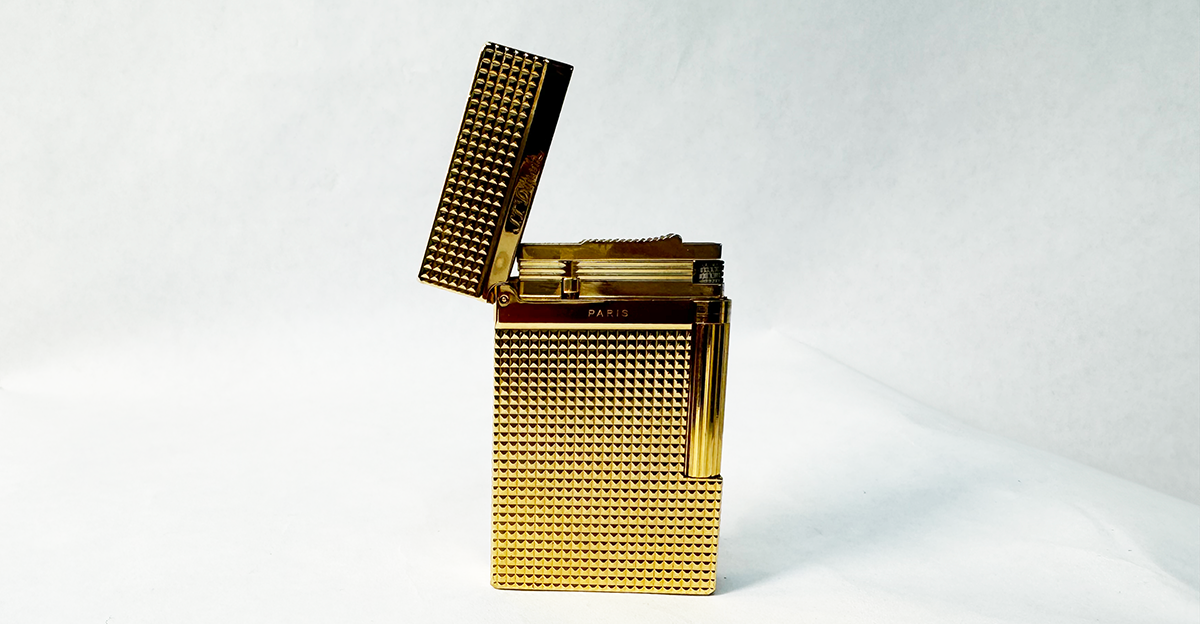
What would your advice be to someone looking for a Dupont and considering buying a cheap knockoff?
David: It does not make sense to buy a knockoff. You buy a Dupont lighter for the quality and reputation. Built out of solid brass- these lighters are meant to last for generations. As mentioned, we perform service on lighters that are still in circulation from the 1950’s. These are items that can be family heirlooms. It would be a shame to sacrifice the quality for a look-alike knockoff.
Do you know how Dupont is combatting the continued fake business?
David: Dupont is on constant watch for shops that sell inauthentic goods. Customers are the best source of information as they can point Dupont themselves to the fraudulent seller.
Finally, most S.T. Dupont Ligne 1 and Ligne 2 lighters, I find, are more geared toward lighting cigars or cigarettes. Is there a pipe flame adapter?
David: The ligne 1 and ligne 2 lighters are capable of being switched to a pipe flame. As an authorized repair center, we are happy to service anyone’s lighter, whether in or out of warranty. We also offer customization options such as the pipe flame, dual-flame/single flame, or engraving services. To get your lighter converted contact David over here.

How to Spot a Fake Dupont Lighter
As noted earlier in the article, S.T. Dupont lighters have a serial number stamped on the bottom. This stamp will not be uniform in size or spacing, and the stamping will not even be perpendicular. On the right, you will notice a perfectly uniform stamping of 2JC5026, whereas the one on the left is 1A5CC18 and is spaced and sized differently. This is a clear indicator that the one on the left is authentic and the one on the right is a fake.
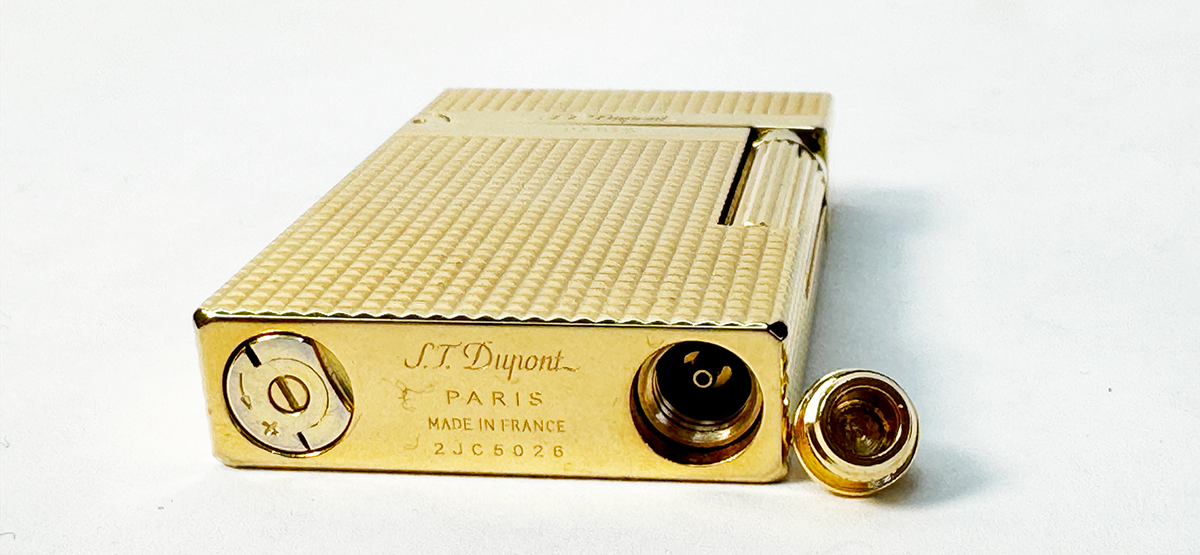
Additionally, you’ll want to look under the refill cap, as shown above. There is no coloring – it should be hand-painted yellow paint for this Ligne 2 model.
Another tell-tale sign for an authentic S.T. Dupont lighter is the weight. You might think that the fake lighter would weigh less than the original, but in fact, this gold Line 2 is actually heavier at 143 grams on the scale. Almost all fakes will be 130+ grams in weight. No authentic lighter will be more than 110 grams on a scale.
You can follow this guide as well to help authenticate and spot the fakes, and it includes serial numbers to look out for.
In Summary
I won’t be sharing where I found this gold inauthentic lighter as I don’t want to proliferate the world of replica brands any more than they already have. I would suggest you spend a slight amount more and pick yourself up a used lighter that is authentic and serviceable, as you may find it hard to get your knockoff actually serviced.
I want to thank David for taking the time to answer my questions and helping expand the world of S.T. Dupont lighters for the pipe community and, of course, offering to change out the standard flame to a pipe flame for better lighting for our fellow pipe smokers.



